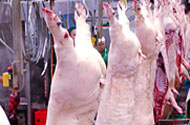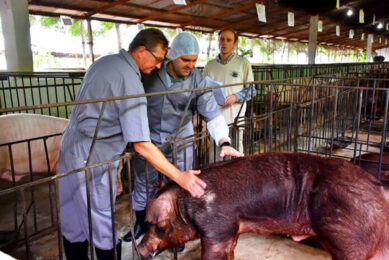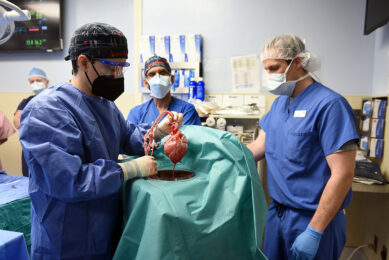EFSA assesses risk of salmonella from pig meat

The European Food Safety Authority (EFSA) has assessed the public health risks from salmonella in pigs and the impact of possible control measures.
The assessment suggests that pigs and pig meat may be responsible for 10 to 20% of all human cases of salmonellosis in the EU – but with differences between countries – and that controlling salmonella more effectively within the pig meat food chain would have a direct impact on reducing the number of human cases.
©
This work by EFSA’s Biological Hazards Panel (BIOHAZ) was at the request of the European Commission and will support the setting of any targets for the reduction of salmonella in pigs across the European Union. To support the Panel opinion and in line with EFSA’s strategy on cooperation and networking with Member States, a consortium of institutes from across the European Union was established for the first time. This consortium developed an EU level model to quantify the public health risk of Salmonella in the pig meat food chain, from farm to fork.
©
The Panel found evidence suggesting that the human cases attributable to salmonella in pig meat will mainly depend on the levels of salmonella in pigs and pig meat, as well as on consumption patterns and the relative importance of the other sources of salmonella.
©
Reduce salmonella in humans
The Panel evaluated a series of measures to reduce the number of human cases of salmonella. These included ensuring pigs in breeding holdings are free from salmonella, ensuring that the feed is also free from salmonella, adequate cleaning and disinfection of holdings, avoiding contamination during slaughter, and decontaminating carcasses. The Panel indicated that these measures should be used in combination and based on the individual situation of each Member State; and that a hundredfold reduction of the number of salmonella bacteria on contaminated carcasses would result in a 60-80% reduction of the cases of human salmonellosis originating from pig meat consumption.
The Panel evaluated a series of measures to reduce the number of human cases of salmonella. These included ensuring pigs in breeding holdings are free from salmonella, ensuring that the feed is also free from salmonella, adequate cleaning and disinfection of holdings, avoiding contamination during slaughter, and decontaminating carcasses. The Panel indicated that these measures should be used in combination and based on the individual situation of each Member State; and that a hundredfold reduction of the number of salmonella bacteria on contaminated carcasses would result in a 60-80% reduction of the cases of human salmonellosis originating from pig meat consumption.
©
The experts also indicated that in order to reduce salmonella in pigs going to slaughter, decreasing the levels of salmonella in holdings where pigs are bred would result in highest reduction. In Member States which have high levels of salmonella this would lead to the greatest reduction. The Panel also says that ensuring feed is salmonella-free could lead to further reductions, and, in Member States with lower levels of salmonella, this approach would have the highest impact.
©
The opinion also recommends that information on the temperature at which the pig meat is kept during transportation and how consumers store it at home is important to further understand the factors that lead to risks for salmonella in humans.
©
Source: EFSA
©
©
©
Join 18,000+ subscribers
Subscribe to our newsletter to stay updated about all the need-to-know content in the pigsector, three times a week. Beheer
Beheer










 WP Admin
WP Admin  Bewerk bericht
Bewerk bericht